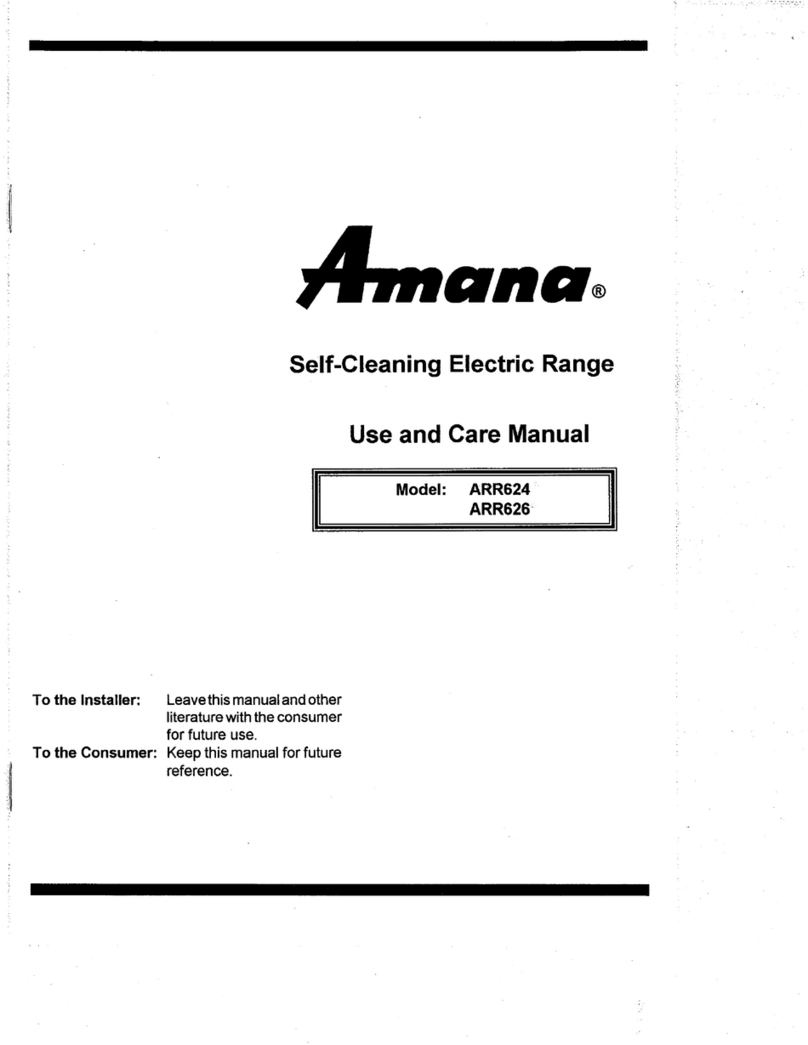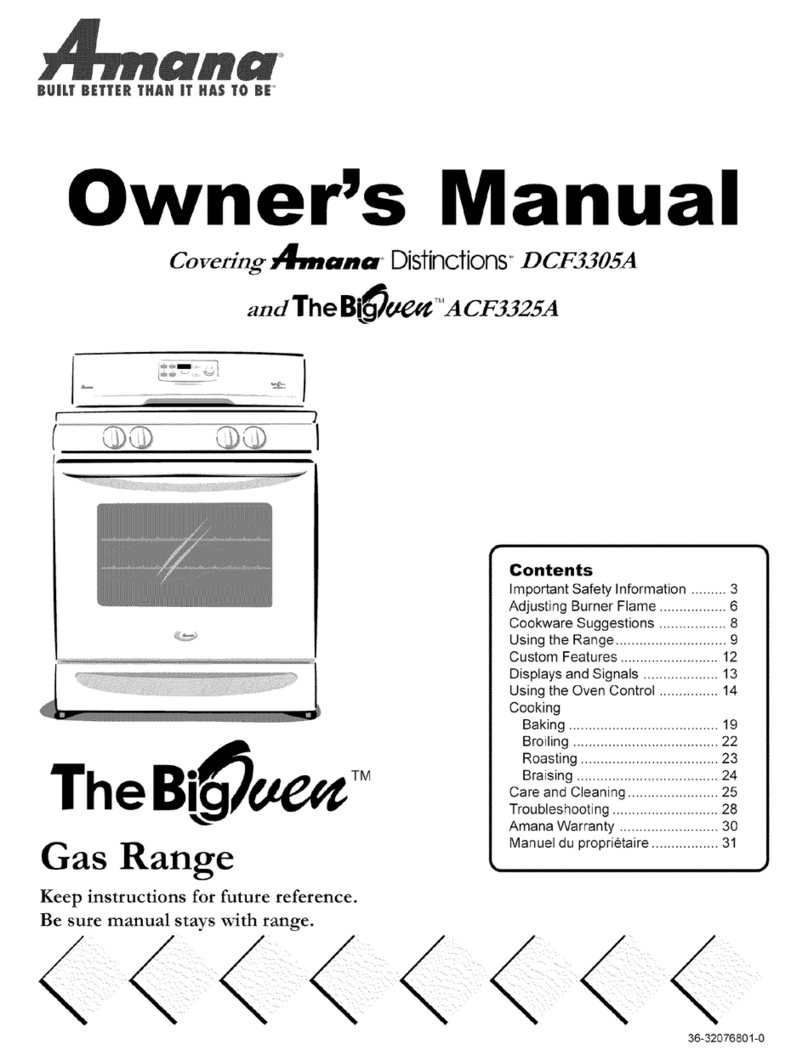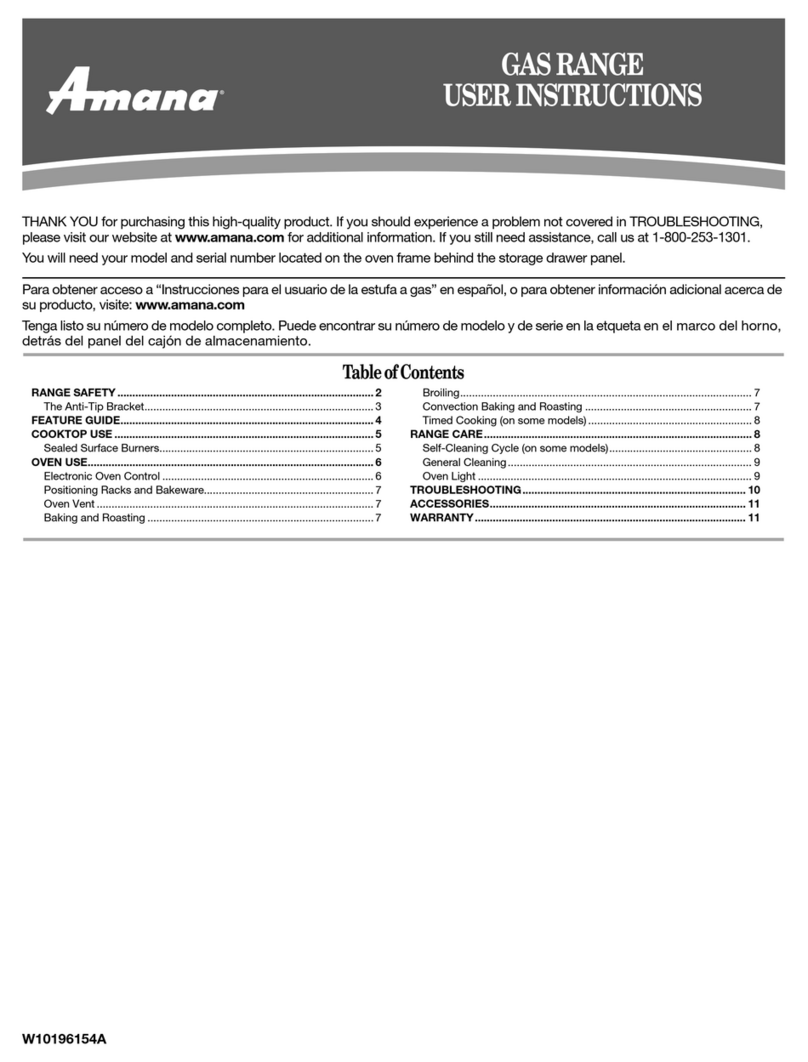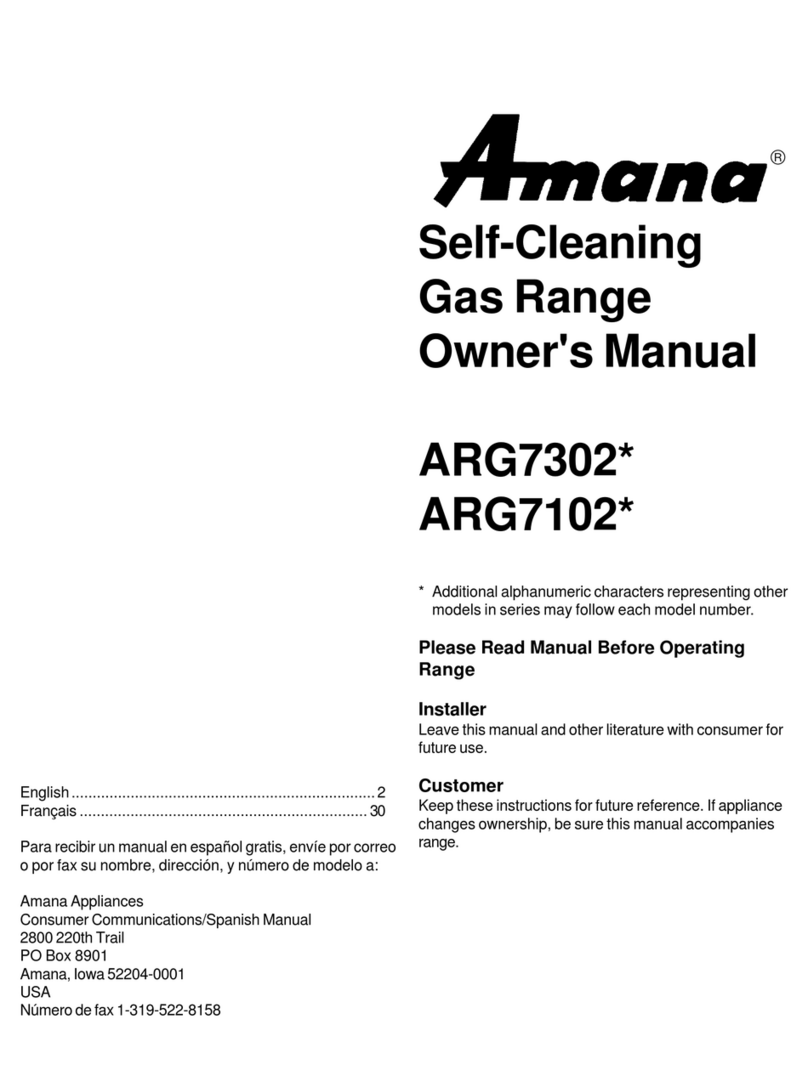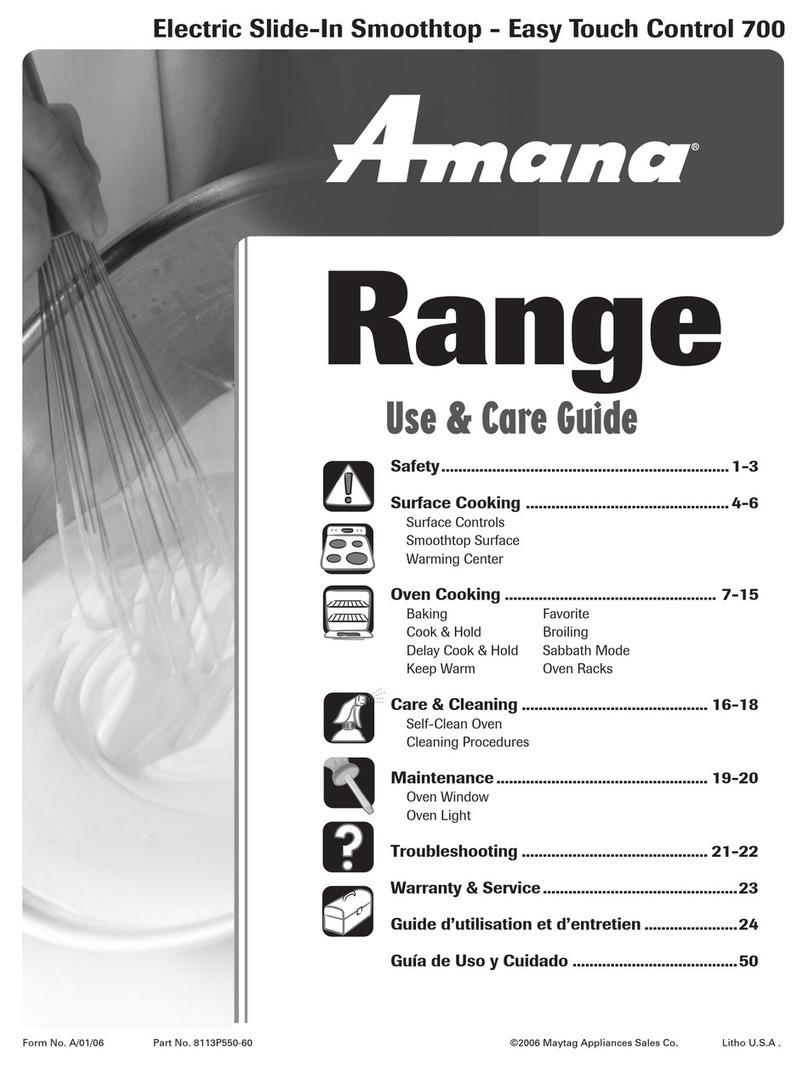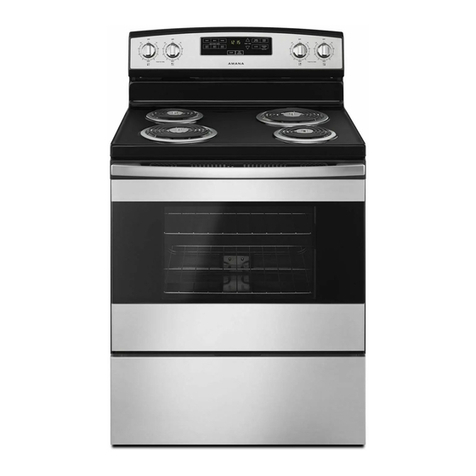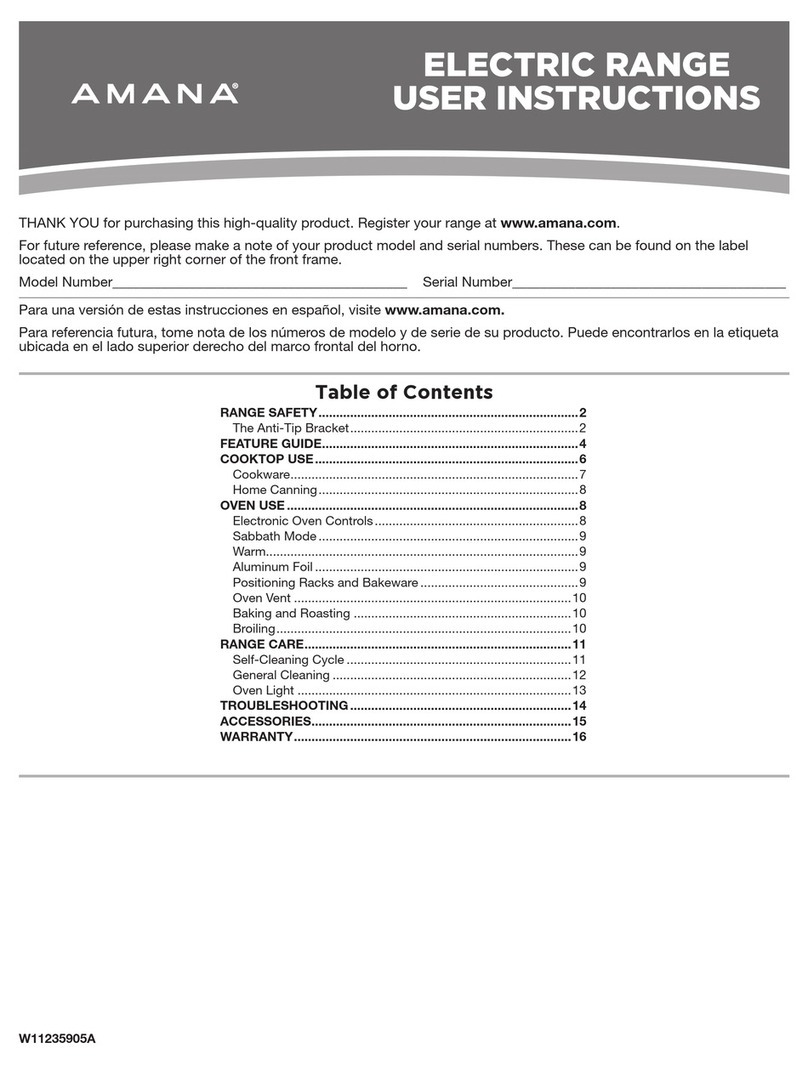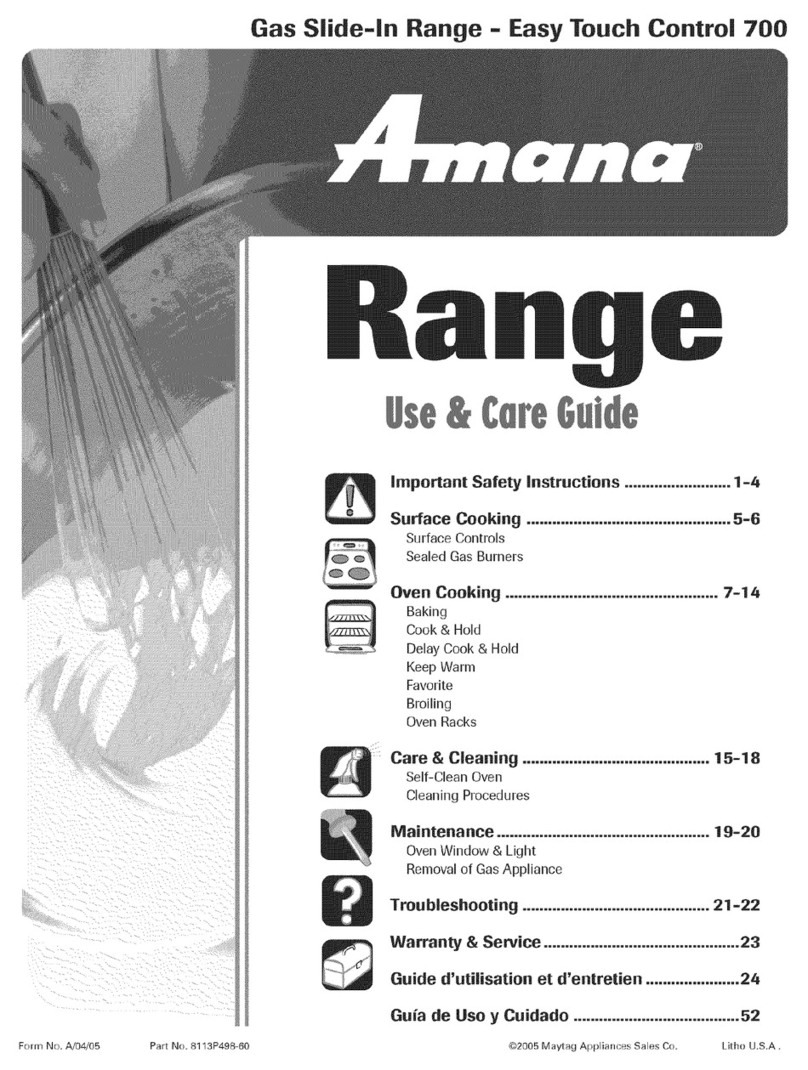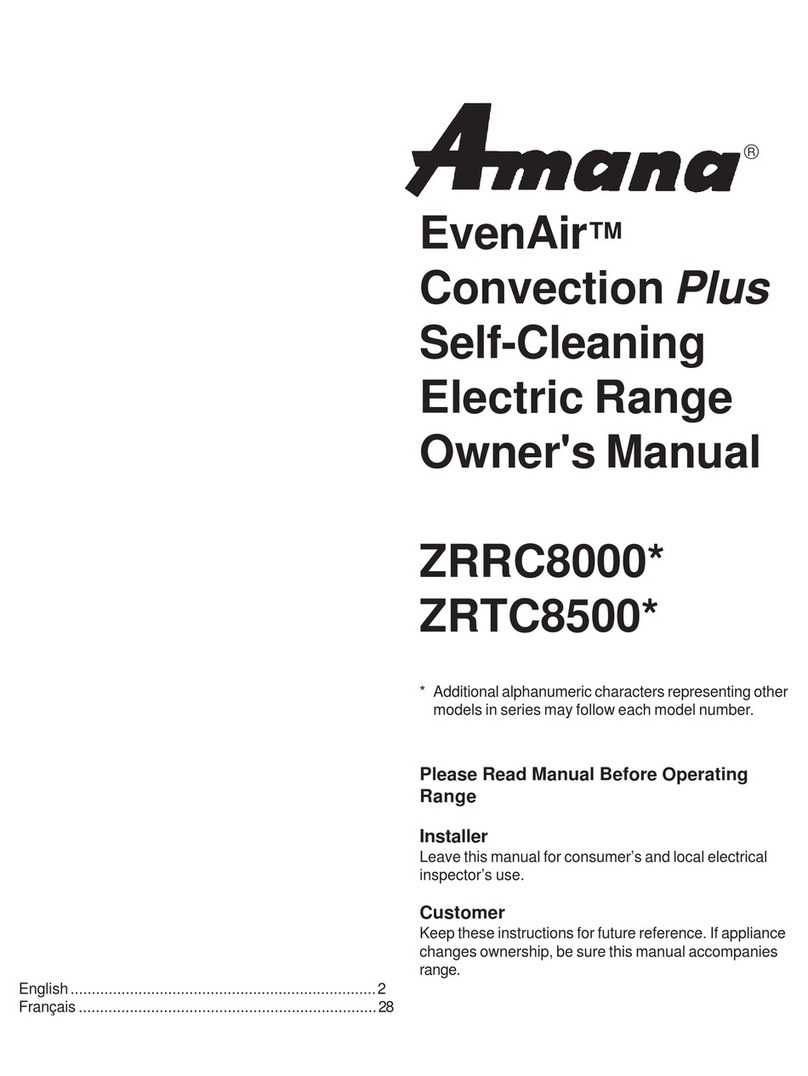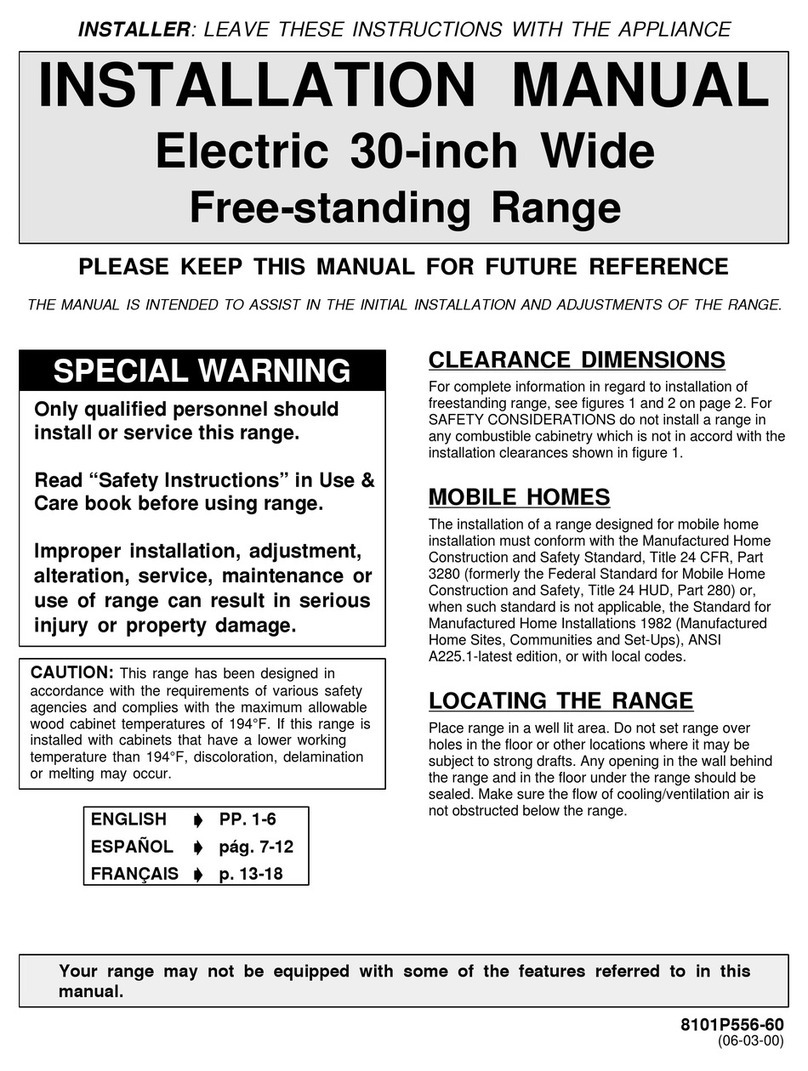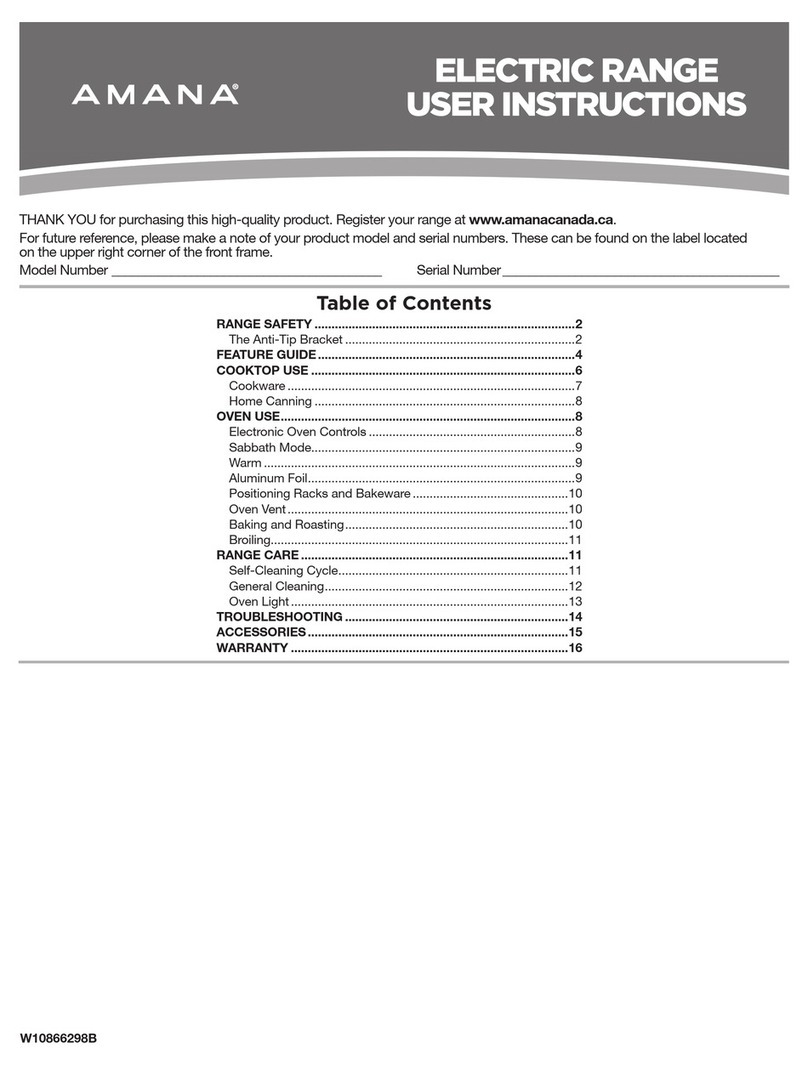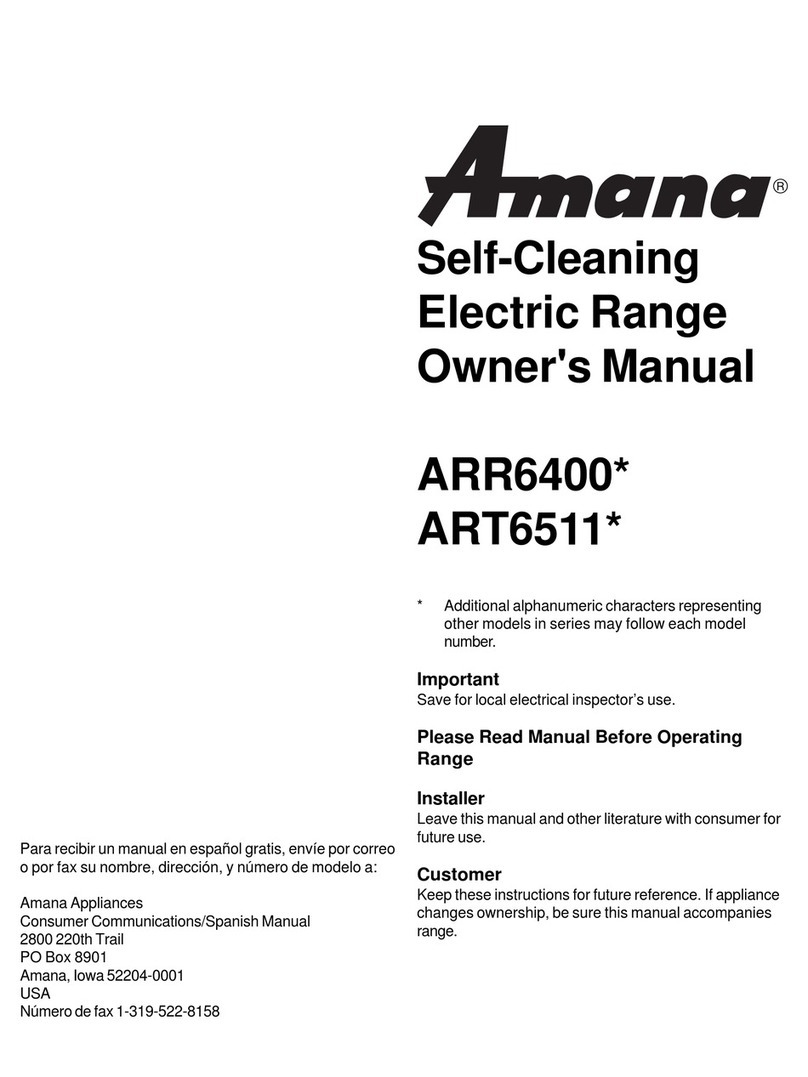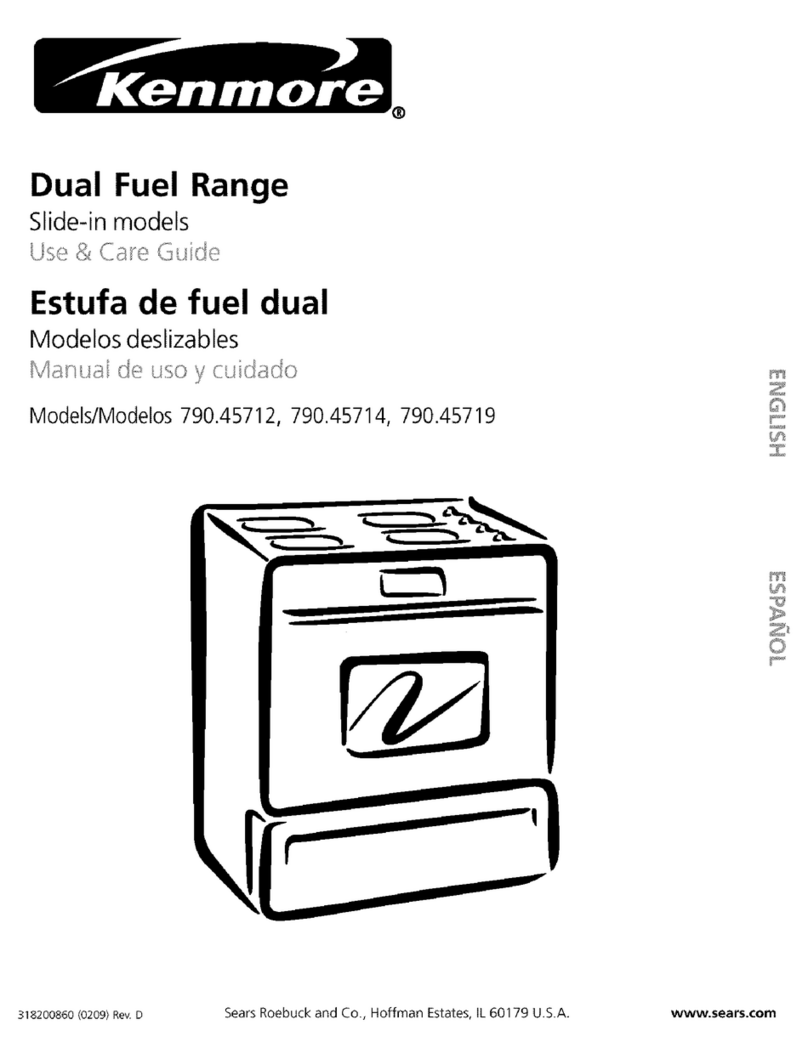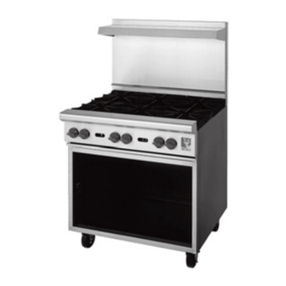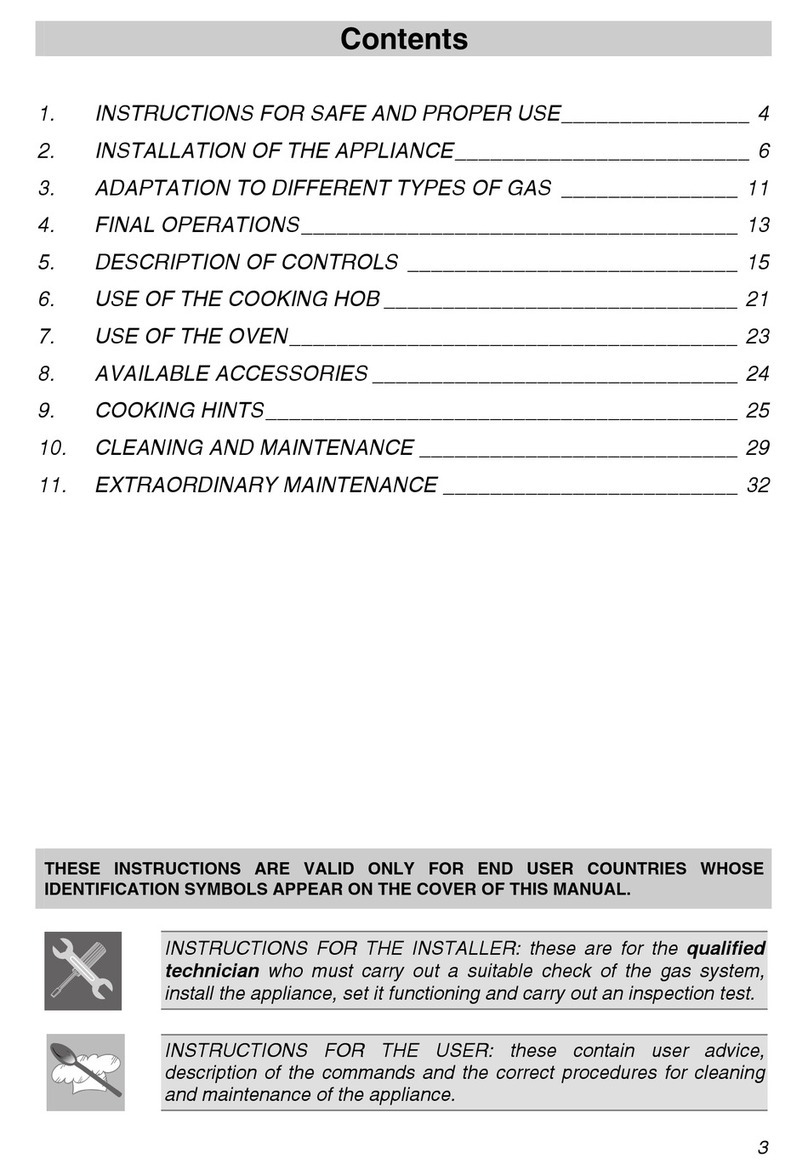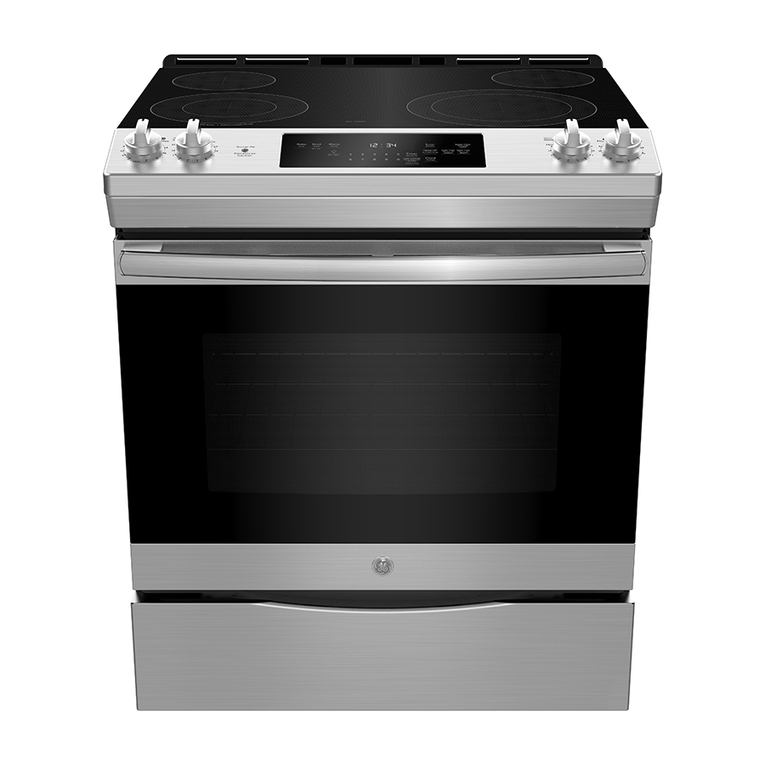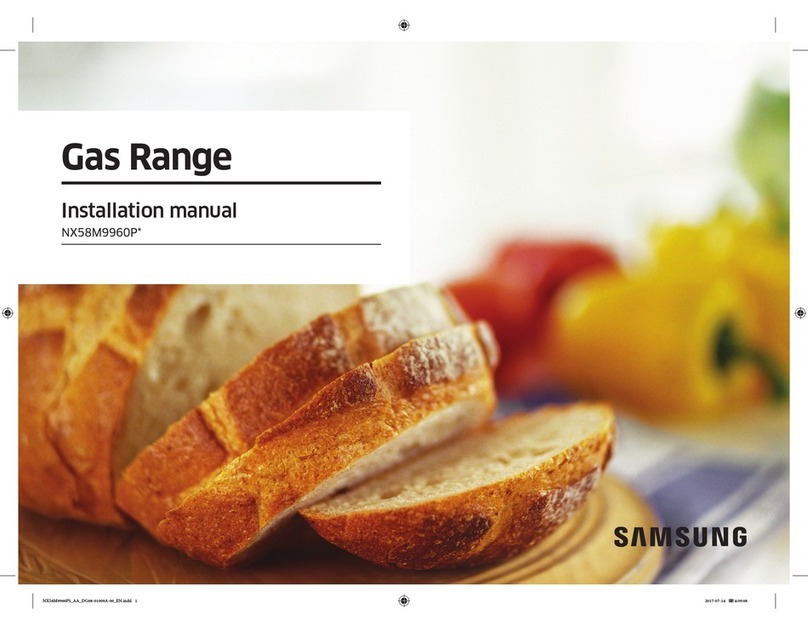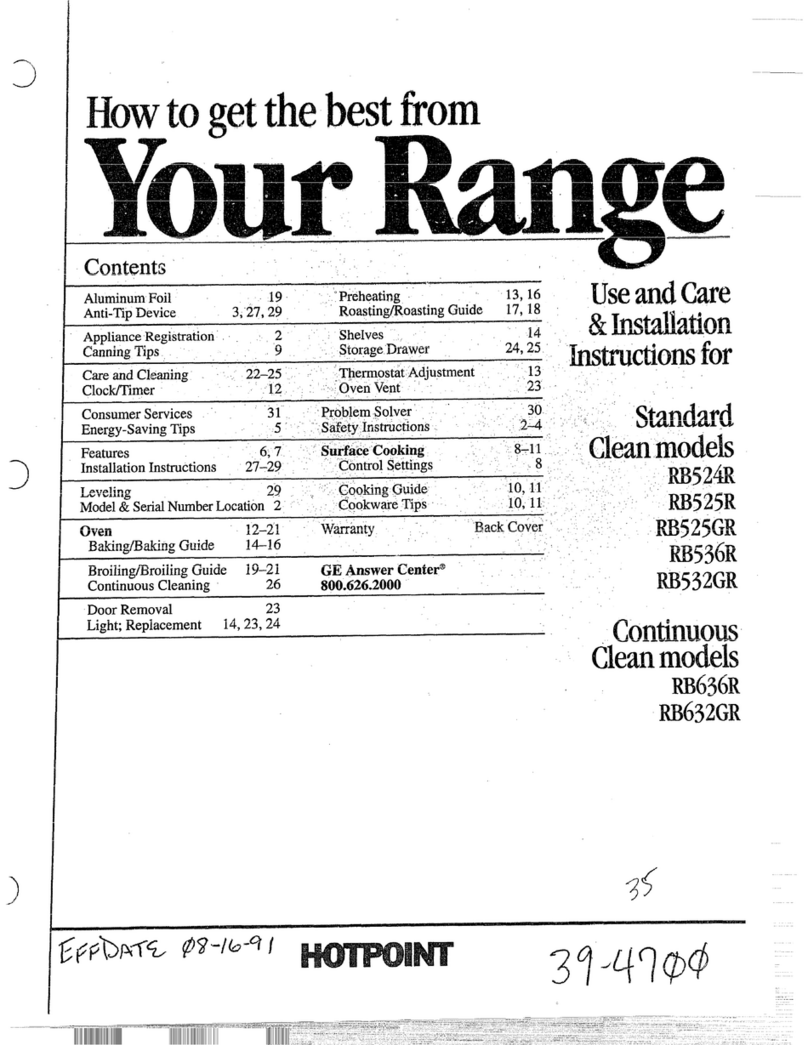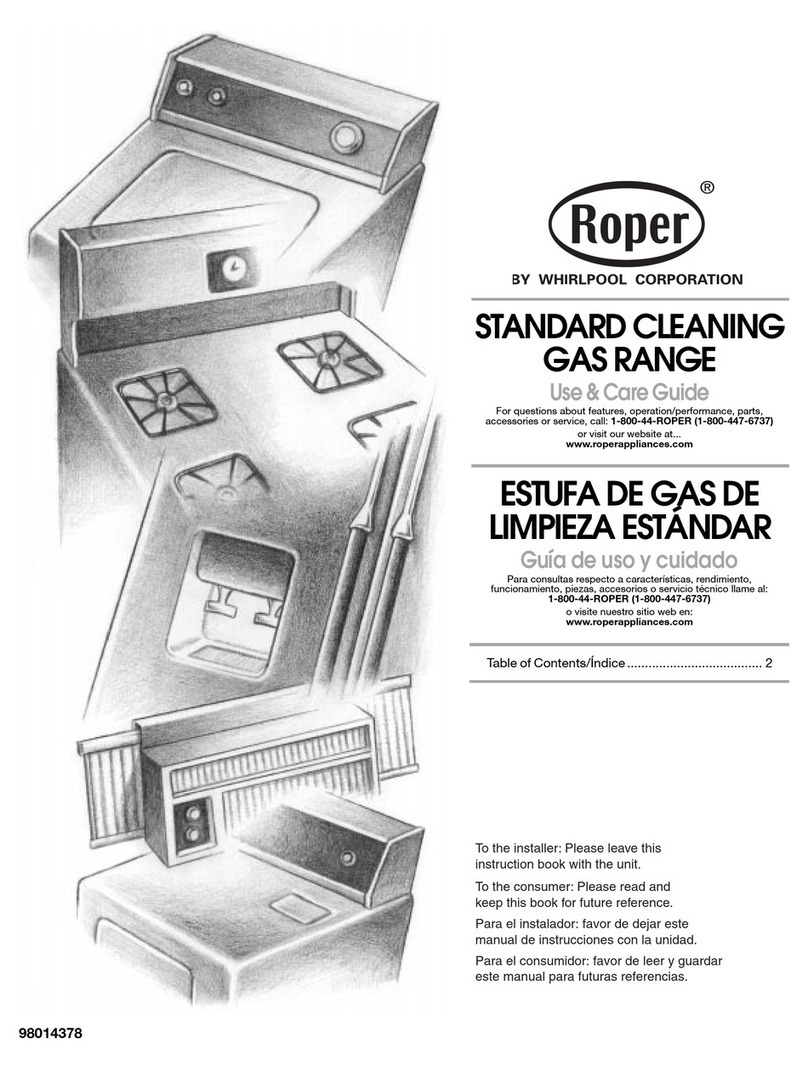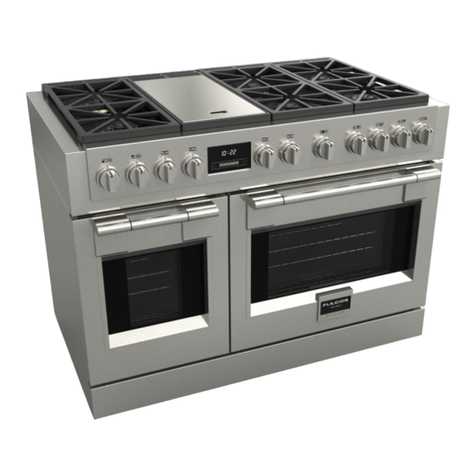
2
Contents
Model Identification
Completeenclosedregistrationcardandpromptlyreturn.
If registration card is missing, call Consumer Affairs
Departmentat 1-800-843-0304 inside U.S.A.
319-622-5511outside U.S.A. When contacting Amana,
provideproduct information located on rating plate. Rating
plateislocatedontheovenframebehindbroilerdoor.
Recordthe following:
ModelNumber: ______________________________
ManufacturingNumber: ________________________
SerialorS/NNumber: _________________________
Dateof purchase:_____________________________
Dealer’sname and address: ____________________
__________________________________________
__________________________________________
Parts and Accessories
Purchasereplacementpartsandadditionalaccessories
(e.g.,refrigeratorshelves,dryerracks,orcooktop
modules)over the phone. Toorder accessories for your
Amanaproduct,call1-800-843-0304insideU.S.A.or
319-622-5511outsideU.S.A.
Service
Keepa copy of sales receipt for futurereference or in
case warranty service is required. Any questions or to
locatean authorized servicer, call1-800-NAT-LSVC
(1-800-628-5782)inside U.S.A.319-622-5511outside
U.S.A.Warranty service must be performed by an
authorizedservicer.Amana, also recommends contacting
anauthorized servicer if service is requiredafterwarranty
expires.
Asure™ Extended Service Plan
Amanaoffers long-term service protection for this new
range. Asure™ Extended Service Plan is specially
designedtosupplementAmana’sstrong warranty.
Thisplancoversparts,labor, and travel charges.
Call1-800-528-2682forinformation.
ImportantSafety Information.......................................3
ALL APPLIANCES.................................................. 4
OVEN ..................................................................... 4
SURFACECOOKINGUNITS .................................. 4
DelayedIgnition ...................................................... 4
VENTILATIONHOOD .............................................. 5
In Case ofFire ........................................................ 5
Precautions ............................................................ 5
Installation
Packing Material ..................................................... 5
Range Location ....................................................... 5
CabinetOpening ..................................................... 5
MinimumClearancestoCombustibleSurfaces ....... 6
SpecialCountertop Conditions ................................ 6
GasConnection Requirements................................ 6
Gas Supply Location............................................... 6
Gas SupplyPressure.............................................. 7
PressureRegulator Location ................................... 7
Convertingfor Use with NaturalGas
orPropane Gas....................................................... 7
Anti-tip BracketInstallation ..................................... 10
GasConnection ...................................................... 11
Testing for Gas Leaks ............................................. 11
SealOpenings ........................................................ 11
PlaceRange ........................................................... 11
Removaland Replacementof Range ....................... 12
Igniting and AdjustingTop Burner PilotFlame ......... 12
Test andAdjusting Surface BurnerFlame ............... 12
RemoveShipping Screws........................................ 13
Place Rangetopand Grates .................................... 13
IgniteOven Burner Pilot .......................................... 13
Test andAdjust Oven BurnerFlame ........................ 14
Operation
OperatingSurface Burners ...................................... 14
Cooking Utensils..................................................... 15
Prepare to Bake...................................................... 16
Baking .................................................................... 17
Adjusting FactorySet BakingTemperature ............. 17
Preparefor Broiling ................................................. 18
Broiling ................................................................... 18
BakingGuide .......................................................... 19
BroilingGuide ......................................................... 19
PoultryRoasting Guide ........................................... 20
Beef and Pork Roasting Guide ................................ 20
CareandCleaning
RemovingOvenDoor ............................................... 21
RemovingRangetopandGrates .............................. 21
Remove Grid,Pan, and Rack .................................. 21
RemovingOvenBottom........................................... 22
RemovingSurfaceBurners ...................................... 22
CleaningSurface Burners........................................ 23
Cleaning.................................................................. 24
BeforeCalling forService............................................26
Warranty ....................................................................27

